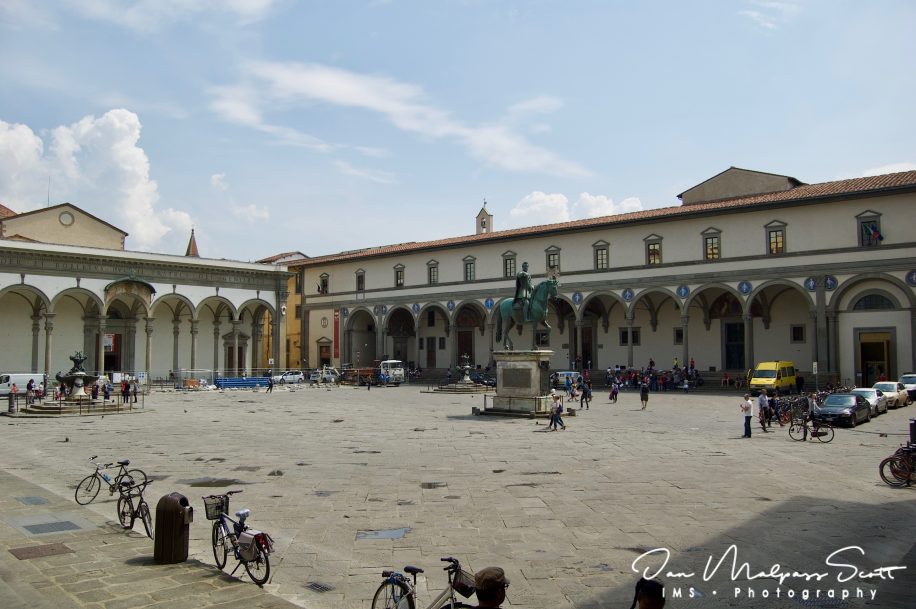The Ospedale degli Innocenti (Italian pronunciation: [ospeˈdaːle deʎʎ innoˈtʃɛnti]; ‘Hospital of the Innocents’, also known in old Tuscan dialect as the Spedale degli Innocenti) is a historic building in Florence, Italy. It was designed by Filippo Brunelleschi, who received the commission in 1419 from the Arte della Seta. It was originally a children’s orphanage. It is regarded as a notable example of early Italian Renaissance architecture. The hospital, which features a nine bay loggia facing the Piazza SS. Annunziata, was built and managed by the “Arte della Seta” or Silk Guild of Florence. That guild was one of the wealthiest in the city and, like most guilds, took upon itself philanthropic duties.
The façade is made up of nine semicircular arches springing from columns of the Composite order. The semicircular windows bring the building down, earthbound and is a revival of the classical style, no longer a pointed arch. In the spandrels of the arches there are glazed blue terracotta roundels with reliefs of babies designed by Andrea della Robbia suggesting the function of the building. There is an emphasis on the horizontal because the building is longer than it is tall. Above each semicircular arch is a tabernacle window (a rectangular window with a triangular pediment on the top).
The building reveals a clean and clear sense of proportion. The height of the columns is the same as the width of the intercolumniation and the width of the arcade, making each bay a cube. The building’s simple proportions reflect a new age, one of secular education, and a sense of great order and clarity. Similarly, the height of the entablature is half the column height, as is appropriate for a clear-minded society.
Children were sometimes abandoned in a basin which was located at the front portico. However, this basin was removed in 1660 and replaced by a wheel for secret refuge. There was a door with a special rotating horizontal wheel that brought the baby into the building without the parent being seen. This allowed people to leave their babies, anonymously, to be cared for by the orphanage. This system was in operation until the hospital’s closure in 1875. Today the building houses a small museum of Renaissance art with works by Luca della Robbia, Sandro Botticelli, Piero di Cosimo and Adoration of the Magi by Domenico Ghirlandaio.
Piazza Santissima Annunziata
The Foundling Hospital defines the eastern side of the Piazza Santissima Annunziata, the other two principal facades of which were built later to imitate Brunelleschi’s loggia. The piazza was not designed by Brunelleschi, as is sometimes reported in guide books. The west façade, the Loggia dei Servi di Maria, was designed by Antonio da Sangallo the Elder in the 1520s. It was built for the mendicant order, the Servi di Maria, but is today a hotel. The north side of the piazza is defined by the Basilica della Santissima Annunziata, the Basilica of the Most Holy Annunciation. Though the building is much older, the facade was added in 1601 by the architect Giovanni Battista Caccini. The equestrian statue of Ferdinand I of Tuscany was made by the noted sculptor, Giambologna (pseudonym for Jean de Boulogne) and placed there in 1608. The fountain was added in 1640.


